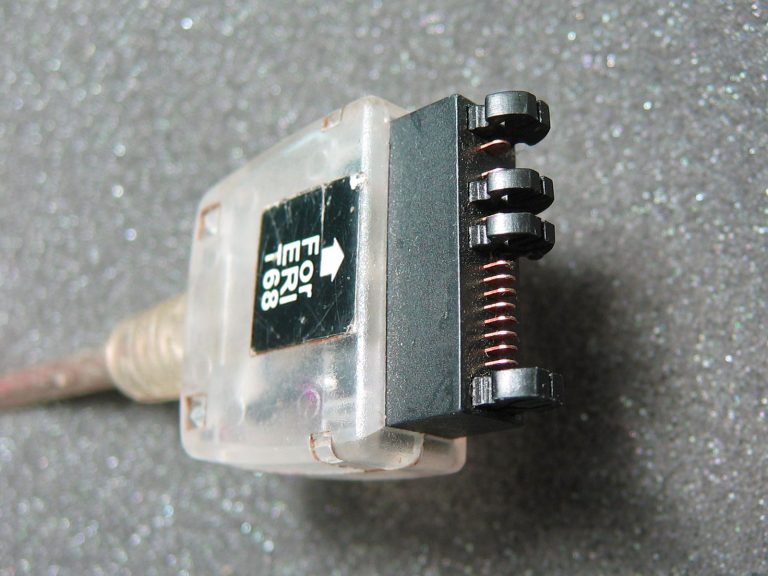How to Test Evaporator Temperature Sensor? All You Need To Know
When properly functioning your car’s air conditioning system, the evaporator temperature sensor plays a crucial role. This sensor is responsible for measuring the temperature of the evaporator, allowing the system to regulate the cooling process effectively. However, like any other component, the evaporator temperature sensor may encounter issues over time, leading to a malfunctioning air conditioning system.
In this article, we’ll delve into the importance of this sensor and guide you on how to test it to ensure your AC works optimally.
Table of Contents
Understanding the Evaporator Temperature Sensor

The evaporator temperature sensor, also known as the A/C temperature sensor or thermistor, is a small but significant component within the air conditioning system of your vehicle.
It measures the temperature of the evaporator, which is the component responsible for cooling the air before it circulates into the cabin. The data collected by the sensor helps the AC system regulate the cooling process, ensuring a comfortable and consistent temperature inside the vehicle.
How does the sensor work?
The evaporator temperature sensor operates on the principle of electrical resistance. As the temperature changes, the sensor’s electrical resistance also varies accordingly.
This resistance change is then translated into electrical signals that the vehicle’s onboard computer can interpret. These signals allow the AC system to adjust the refrigerant flow and control the evaporator’s cooling capacity.
The role of the sensor in the air conditioning system The evaporator temperature sensor acts as a feedback device for the AC system, providing essential data about the evaporator’s temperature.
With this information, the system can optimize cooling efficiency, prevent icing on the evaporator coils, and protect the compressor from potential damage. Proper sensor functioning ensures that the AC system works efficiently, providing a comfortable climate for passengers in the vehicle.
How to Test Evaporator Temperature Sensor?
Before attempting to test the evaporator temperature sensor, it is crucial to prioritize safety. Ensure the vehicle is parked in a well-ventilated area, as you may need to run the AC during the testing process. Always wear appropriate personal protective equipment (PPE) such as gloves and safety glasses, to avoid potential injuries.
To accurately test the evaporator temperature sensor, you’ll need a few essential tools, including a multimeter capable of measuring resistance, a set of wrenches, and the vehicle’s service manual for reference.
Steps to ensure a safe testing environment
Disconnect the vehicle’s battery before diving into the testing process to prevent electrical mishaps. Allow the engine and AC system to cool down for at least 30 minutes before proceeding to ensure you don’t encounter any scalding components during the test.
Step-by-Step Guide to Test the Evaporator Temperature Sensor
Step 1: Locate the sensor
Consult your vehicle’s service manual to find the exact location of the evaporator temperature sensor. Typically, it is situated near the evaporator unit inside the HVAC (Heating, Ventilation, and Air Conditioning) box.
Step 2: Prepare the testing equipment
Set your multimeter to the resistance (ohms) mode. If your multimeter allows, select the temperature sensor symbol if available, as this will give you more accurate readings for thermistors.
Step 3: Disconnect the sensor
Carefully disconnect the electrical connector attached to the evaporator temperature sensor. Be gentle and avoid using excessive force to prevent any damage.
Step 4: Use a multimeter to check the resistance
Using the multimeter probes to measure the resistance across the sensor terminals with the sensor disconnected. Ensure the probes connect well with the terminals for accurate readings.
Step 5: Interpreting the results
Compare the resistance value you obtained with the specifications provided in your vehicle’s service manual. If the reading falls within the acceptable range, the sensor functions correctly.
If the resistance reading is either too high or too low, it indicates a potential issue with the sensor, and further investigation or replacement may be necessary.
Toyota AC Flow Sensor Bypass; A Must-Read Guide
sensor guides
Common Issues and Troubleshooting
What do different resistance values indicate?
If the resistance reading is higher than the specified range, it suggests that the evaporator temperature sensor is faulty and may need to be replaced. Conversely, a resistance reading lower than the specified range may indicate a short circuit within the sensor or its wiring.
Identifying potential problems with the sensor In some cases, the evaporator temperature sensor may fail due to accumulated dirt, debris, or moisture, leading to inaccurate temperature readings.
Cleaning the sensor and its surrounding area may resolve such issues. However, a replacement is likely necessary if cleaning doesn’t improve the sensor’s performance.
Solutions for common issues
If you’ve determined the evaporator temperature sensor is faulty, consider sourcing a genuine replacement part from your vehicle’s manufacturer or a reputable aftermarket supplier. Follow the reverse steps to install the new sensor properly. Alternatively, if you are unsure about handling the replacement, it’s best to consult a qualified technician to avoid any potential errors.
Conclusion
Testing the evaporator temperature sensor is critical in maintaining your vehicle’s properly functioning air conditioning system. By understanding its role and following the step-by-step guide provided in this article, you can diagnose potential issues and ensure optimal cooling performance. Remember, safety should always be a priority, and when in doubt, seeking professional assistance will help keep your vehicle’s AC running smoothly for a comfortable driving experience.
Can You Check a MAF Sensor with a Multimeter? A Comprehensive Guide
sensor guides




